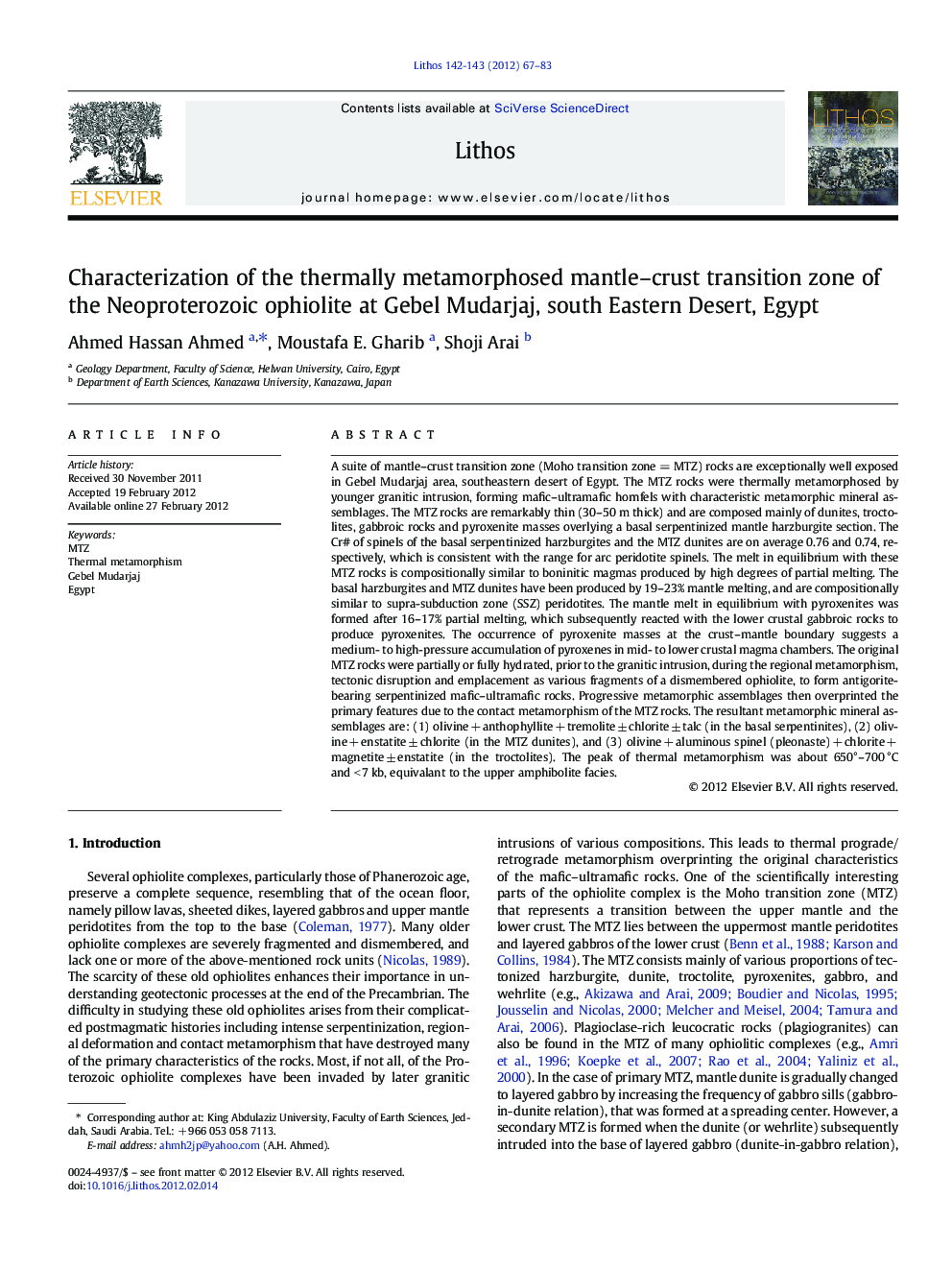| Article ID | Journal | Published Year | Pages | File Type |
|---|---|---|---|---|
| 4716594 | Lithos | 2012 | 17 Pages |
A suite of mantle–crust transition zone (Moho transition zone = MTZ) rocks are exceptionally well exposed in Gebel Mudarjaj area, southeastern desert of Egypt. The MTZ rocks were thermally metamorphosed by younger granitic intrusion, forming mafic–ultramafic hornfels with characteristic metamorphic mineral assemblages. The MTZ rocks are remarkably thin (30–50 m thick) and are composed mainly of dunites, troctolites, gabbroic rocks and pyroxenite masses overlying a basal serpentinized mantle harzburgite section. The Cr# of spinels of the basal serpentinized harzburgites and the MTZ dunites are on average 0.76 and 0.74, respectively, which is consistent with the range for arc peridotite spinels. The melt in equilibrium with these MTZ rocks is compositionally similar to boninitic magmas produced by high degrees of partial melting. The basal harzburgites and MTZ dunites have been produced by 19–23% mantle melting, and are compositionally similar to supra-subduction zone (SSZ) peridotites. The mantle melt in equilibrium with pyroxenites was formed after 16–17% partial melting, which subsequently reacted with the lower crustal gabbroic rocks to produce pyroxenites. The occurrence of pyroxenite masses at the crust–mantle boundary suggests a medium- to high-pressure accumulation of pyroxenes in mid- to lower crustal magma chambers. The original MTZ rocks were partially or fully hydrated, prior to the granitic intrusion, during the regional metamorphism, tectonic disruption and emplacement as various fragments of a dismembered ophiolite, to form antigorite-bearing serpentinized mafic–ultramafic rocks. Progressive metamorphic assemblages then overprinted the primary features due to the contact metamorphism of the MTZ rocks. The resultant metamorphic mineral assemblages are: (1) olivine + anthophyllite + tremolite ± chlorite ± talc (in the basal serpentinites), (2) olivine + enstatite ± chlorite (in the MTZ dunites), and (3) olivine + aluminous spinel (pleonaste) + chlorite + magnetite ± enstatite (in the troctolites). The peak of thermal metamorphism was about 650°–700 °C and < 7 kb, equivalant to the upper amphibolite facies.
► A complete association of MTZ rocks was described in a Proterozoic ophiolite. ► Possible tectonic setting of formation of the MTZ rocks was achieved. ► Parental melt composition and degrees of partial melting were also obtained. ► Disclosing complicated geologic processes experienced by Proterozoic ophiolites. ► Metamorphic evolution of the MTZ mafic–ultramafic rocks was discussed.
